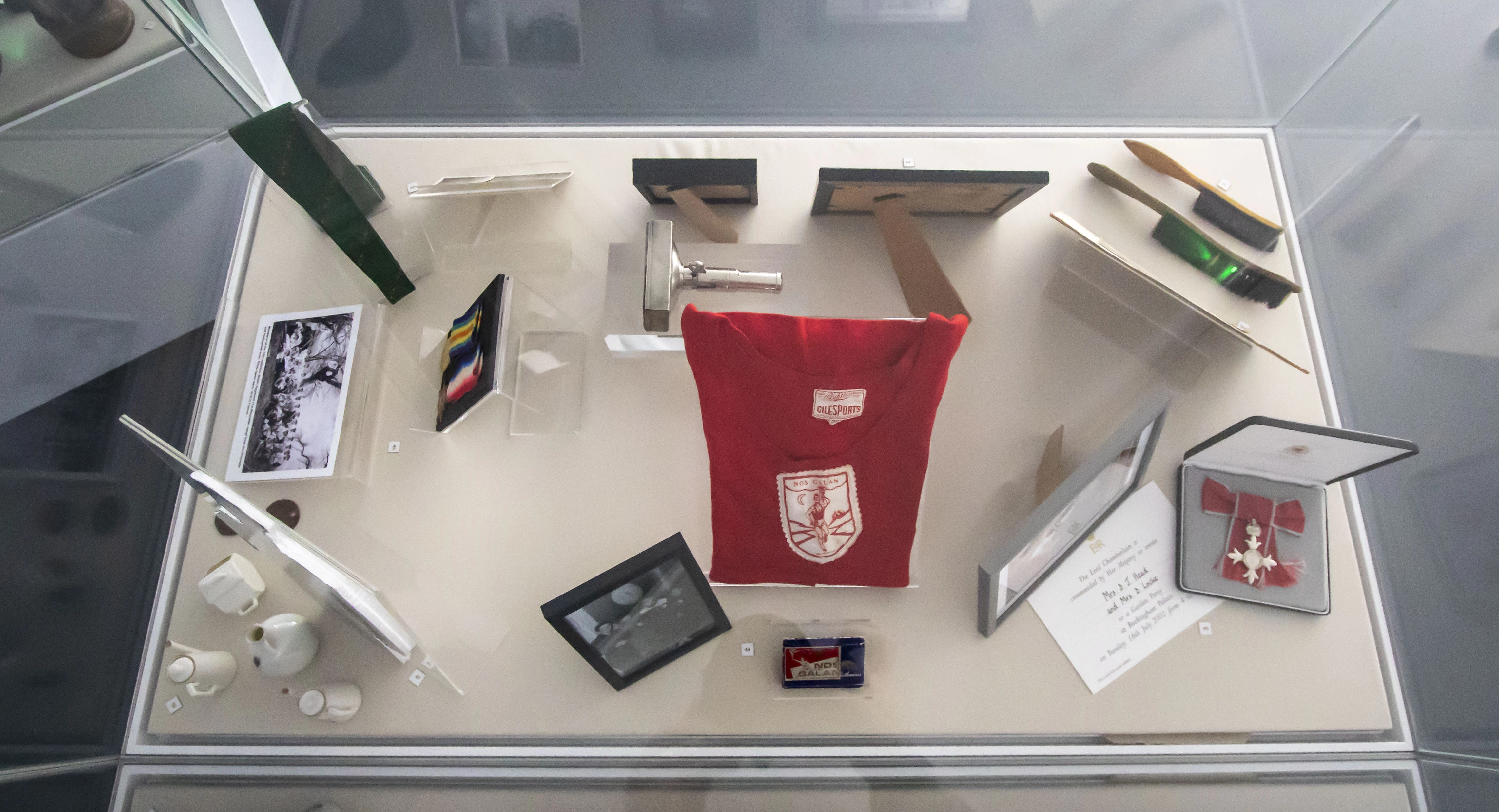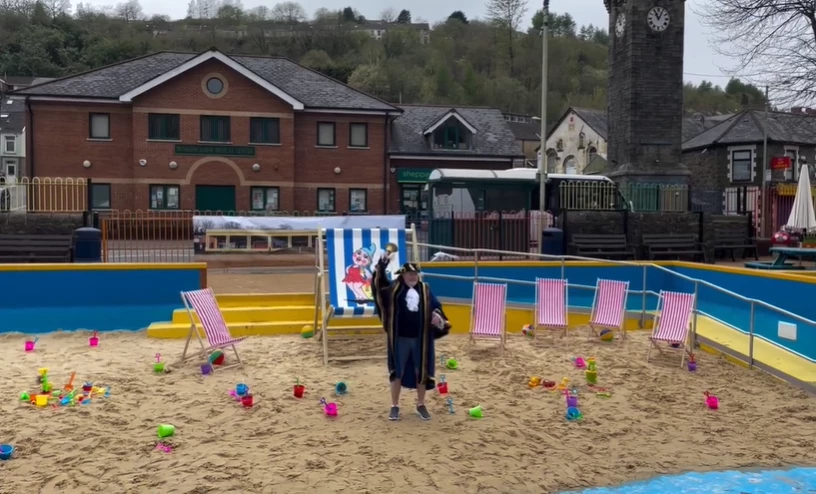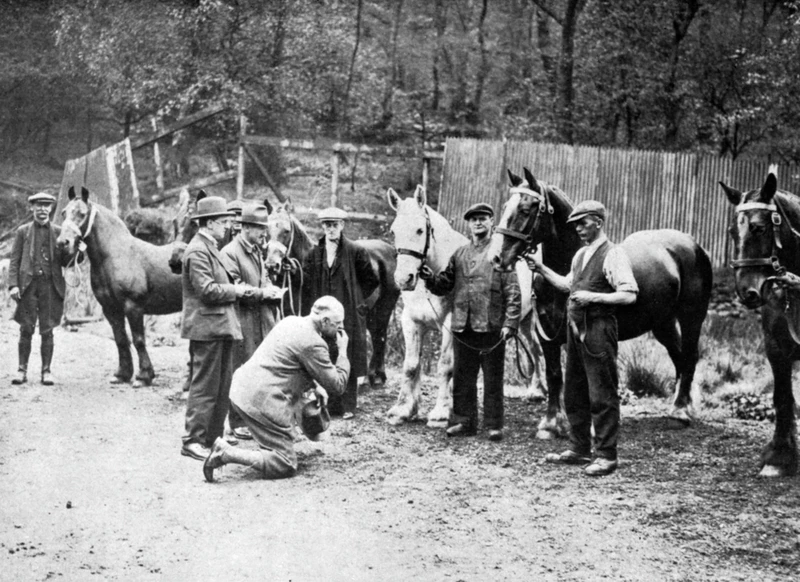EVANS, Pauline, Merthyr Blues: Then and Now © Pauline Evans
Progress
By Mair Smith
Along the new built granite row, great vast spoil heaps surge and grow,
Settling silica tarry smotes upon the terraced streets below.
Workers like ants hoist metal chains, naphthalene scours out the drains.
Slag sparks out of purer steel; the shimmer seems grotesque, surreal.
The barren hills in Dowlais, that wear the cloak of night;
Cough out careworn families that must accept their plight.
Plagued by screeching noises, hammered out and muddled;
There pounds the early morning dew, as iron pig is puddled.
Monster grinders churn the coke – vibrating – adding to the smoke.
The rolling mill starts pounding steel and turns out axles for a wheel.
As golden fluid fills the sand, and moulds some metal for the rails;
An engine blasts a flow of air, igniting liquids for huge pails.
The ravaged scenes and bones of pipes, summon up a ghastly blight,
To fill canal boats and steam trains who chug their burden out of sight.
For new world markets have been found as speculators blow up ground.
The globe now powered by steam galore and micro measured, boiling ore.
For all must pay a price that’s real, diversify, invent and trade,
Progression in the factory built from mottled land and coal and shale.
And tame disease from poisons made, to temper life’s mixed-up brocade.
But future lives will fill the green with windswept turbines – yet unseen.
Heinz Koppel moved to Dowlais in 1944 from Prague, Czechoslovakia, fleeing persecution. He supported the community by teaching art to adults and children, partly as therapy during the war.
His painting has an abstracted, dreamlike quality. The colourful building in the middle of the picture appears as a tent. The people, edifices, singers, and animals are not to scale.
He, like the psychiatrist Freud, believed in expressionism, and placed his emotions into artistic interpretation. There is a tension in Merthyr Blues, between the juxtaposition of natural images such as the mother, baby, and dogs; and 1950s invention such as tower blocks, advertisements, streetlights, bicycles, and cars.
The bright palettes in his work, floating singers, and disconnections between panels have led some to infer a surreal or subconscious aspect to his work.
Mair Gwynedd Smith
Autopsy of a Painting
By Angela Lennon
Autopsy of a Painting, Angela Lennon
Who knows what an artist is thinking when they paint? Everyone is different.
I know that time, location, thoughts and experiences seem to come together during the creation of an artwork.
My past and present life influence my choice of subject, style, colours and mood.
These change throughout the years without notice, it seems that the processes of creativity are as elusive as ever.
Influence
Very much like the Internet and Social Media platforms of today (2024), whereby individuals and groups can reach huge audiences across the globe at a press of a button on their mobile phone, Heinz Koppel was influenced by the sights and sounds around him in the lead up to and during the 1950s when he painted Merthyr Blues; the only difference is, he would be reading a magazine, going to the cinema, dance halls and listening to the radio and vinyl records. Television was not transmitted in Wales until 1952 and most people did not have a television set until the early 1960s.
The singers play a dominant position in the painting Merthyr Blues, as well as the obvious play on words. As evidenced in my interpretation, Heinz was influenced by many well-known Blues singers: Shirley Bassey from Wales (First recorded album Born to sing the Blues 1957, aged 21) and actor, singer and activist Paul Robeson, an African American from New Jersey who forged special links with the people of Wales and the Valleys, in particular through the Miners’ Eisteddfod (1930–1960s). There was an increased exchange of cultures – while Robeson was stunned by the sounds of the singing of hymns in the Churches, Chapel, Social Venues, the people of Wales were being influenced by the Jazz, Blues and characters from overseas.








